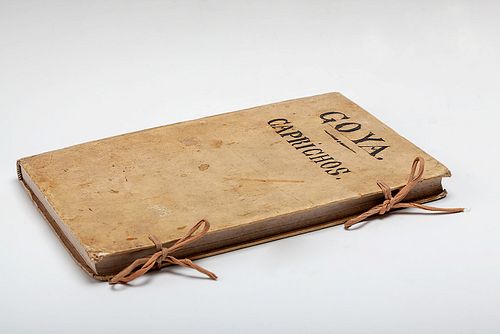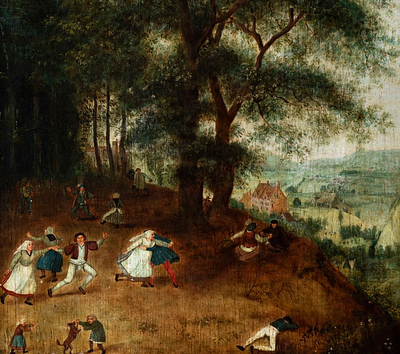FRANCISCO DE GOYA Y LUCIENTES (Zaragoza, 1746 - Bordeaux, 1828). "Los Caprichos de Goya". Fifth edition. National Calcography, Madrid, between 1881 an
Lot 55
About Seller
Setdart Auction House
Carrer Aragó 346
Barcelona
Spain
Setdart Subastas was born in 2004 and is currently the first online art auction in Spain with solidity, prestige and reliability guaranteed by our more than 60,000 users. Setdart has a young, dynamic and enterprising team ready to successfully manage the purchase and sale of art works through custom...Read more
Categories
Estimate:
EUR€50,000 - EUR€60,000
$53,763.44 - $64,516.13
Absentee vs Live bid
Two ways to bid:
- Leave a max absentee bid and the platform will bid on your behalf up to your maximum bid during the live auction.
- Bid live during the auction and your bids will be submitted real-time to the auctioneer.
Bid Increments
| Price | Bid Increment |
|---|---|
| EUR€0 | EUR€10 |
| EUR€200 | EUR€25 |
| EUR€500 | EUR€50 |
| EUR€1,000 | EUR€100 |
| EUR€3,000 | EUR€200 |
| EUR€5,000 | EUR€500 |
| EUR€10,000 | EUR€1,000 |
| EUR€20,000 | EUR€2,000 |
| EUR€50,000 | EUR€5,000 |
About Auction
By Setdart Auction House
Jun 30, 2021
Set Reminder
2021-06-30 08:30:00
2021-06-30 08:30:00
America/New_York
Bidsquare
Bidsquare : Old Masters
https://www.bidsquare.com/auctions/setdart-auction-house/old-masters-7134
Setdart Auction House sofia@setdart.com
Setdart Auction House sofia@setdart.com
- Lot Description
FRANCISCO DE GOYA Y LUCIENTES (Zaragoza, 1746 - Bordeaux, 1828). "Los Caprichos de Goya". Fifth edition. National Calcography, Madrid, between 1881 and 1886. Illustrated volume with 80 engravings on paper. Yellow cardboard binding with title on the cover. Laid paper support that combines various techniques, including etching, aquatint, drypoint and burin. Measurements: 30.5 x 21 cm. Data: (80 pages), 80 illustrations made with the technique of engraving on paper. The Caprichos of Goya. Los Caprichos de Goya is a series of 80 engravings made by the painter. They exemplify a world in crisis, understood in the sense of change. Conceptually, they reveal the fissures of a socio-political structure based on an impeded stratification, and of a system of values based on the immobilism of customs and the tyrannical religious oppression of consciences. Aesthetically, they anticipate modern sensibility and the shift towards an art dominated by subjectivity and creative freedom. Biographically, the Caprichos appear in one of the most decisive decades in Goya's life and artistic production. That is why the successive generations of writers, artists and intellectuals of the last two centuries have not been able to ignore its symbolic condition: symbol of the end of the Ancien Régime, of the change of taste between classicist and romantic aesthetics, and of the crisis produced in the biography and art of a universal creator. The historiography specialized in Goya has established a sequence of events supposedly determining the creation of the Caprichos. This sequence appears to be characterized by a progressive departure from normative art with the consequent approach to the domain of invention. This new conception of art is linked to the biographical episodes of the serious illness that left him deaf, the intimate relations with the Duchess of Alba and the bonds of friendship with the circle of enlightened intellectuals. The conclusion is that Goya needed a series of satirical prints that gave multiple answers to his inventive perception of art, his progressive isolation, his distrust of the human being and his social concerns of enlightened roots. Goya's debt to the reformist environment of the late eighteenth century has been generalized, although the rationalist attitude of the author was penetrated by a deep physical and emotional crisis. The version of the philosopher artist has had an enormous validity in the critical fortune of the Caprichos. In fact, the prints have been understood as an ideological expression of the century of reason, placing them at the level of visual representation of a philosophical, political and cultural movement. The ideology of the series is contextualized within a specific vision of history, according to which the increasingly degraded environment of Carlos IV, María Luisa and Godoy generated a violent contestation inside and outside the court by the reformists. The monarchy is placed in the same target as the privileged classes and the people, against whom Goya and the enlightened minority supposedly direct their criticism. In accordance with this ideological discourse, the artist was able to devise his collection of satirical prints coinciding with a politically favorable moment, characterized by the constitution of a progressive cabinet with Jovellanos as Secretary of Grace and Justice, and Francisco Saavedra as head of the Treasury.
- Shipping Info
-
In-house shipping available. Please inquire at admin@setdart.com.
-
- Buyer's Premium



 EUR
EUR CAD
CAD AUD
AUD GBP
GBP MXN
MXN HKD
HKD CNY
CNY MYR
MYR SEK
SEK SGD
SGD CHF
CHF THB
THB


















